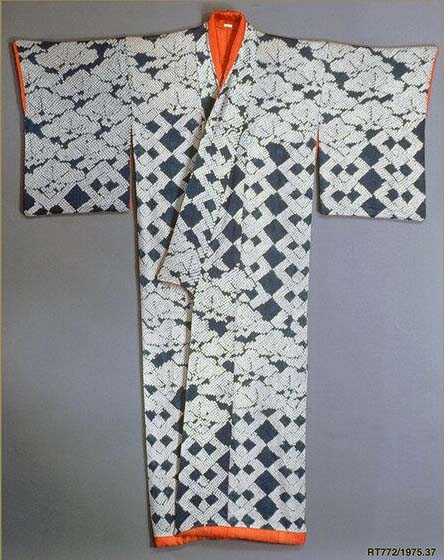Robe (Kosode) with Pines and Interlocking Squares
Not on view
A pattern of overlapping squares as well as pine branches embellish the blue figured silk satin of this robe. Using a traditional tie-dye, or resist-dyeing, technique known as kanoko shibori (from the Japanese verb “to squeeze”), the fabric is first twisted and compressed into tiny, three-dimensional shapes, bound, and then dyed. The design emerges when the binding is released and the fabric flattened. In the most popular variation of the technique, kanoko (fawn), the artisan hand-ties the fabric in small pinches to create a pattern of undyed details, typically similar to a small square with a tiny dot in the center that varies only subtly in shape. As products of a time-consuming and expensive technique, full kanoko-patterned garments were essential to the trousseaux of the eldest daughters of wealthy Kyoto merchants. Robes with kanoko covering their entire surface were the ultimate luxury.
This image cannot be enlarged, viewed at full screen, or downloaded.
This artwork is meant to be viewed from right to left. Scroll left to view more.



